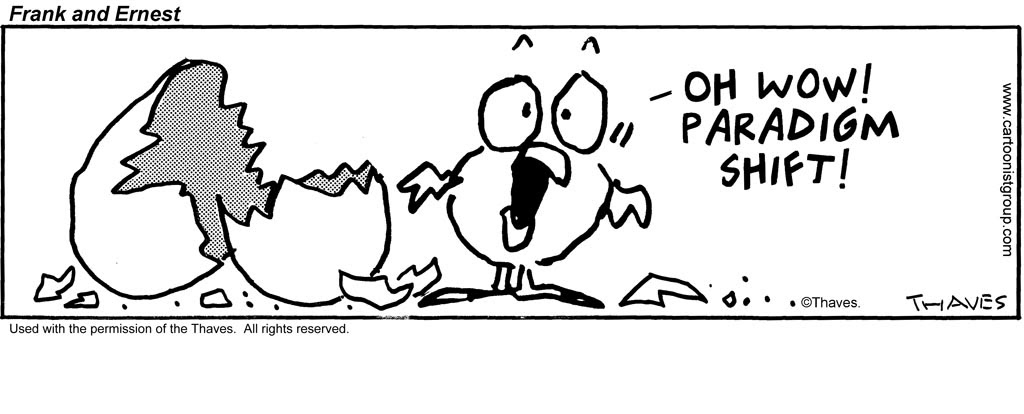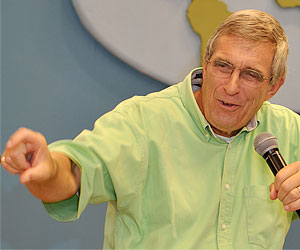In part 1, we established that programs grow out of policies which derive from principles which are birthed in paradigms. These latter, also called worldview, play out in daily life but are rarely acknowledged. Today’s divided America is suffering from divided, and incompatible, worldviews.
We witness daily dysfunction on the policy level in our government agencies. They set goals and objectives to solve the problems as they see them. Policies deal with the question What do we do?
Policies differ greatly between various perspectives: Left vs. Right, Democrats vs. Republicans, Progressives vs. Conservatives, Main Street vs. Wall Street, Red states vs. Blue 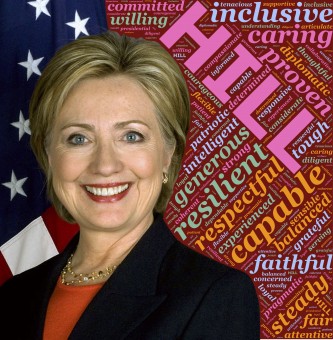 states, the elites vs. the common man (who can forget Hillary Clinton’s “deplorables”).
states, the elites vs. the common man (who can forget Hillary Clinton’s “deplorables”).
Policies don’t grow in a vacuum. They are derived from principles which are often unexamined by administrators, policy makers and practitioners. Principles answer the question Why? Intangible principles translate to tangible policies and programs. They indicate why we do the things we do.
Right to life, or right to choose?
For instance, regarding abortion, does every person have a right to life, or does every woman have a right to choose? The chosen principle will determine government and organizational policy as well as personal behavior.
Regarding gender, is the principle to sustain the natural family or to eliminate male/female distinctions?
Do we seek freedom of speech, or freedom from hate speech, freedom of religion or freedom from religion?
Battles are being fought on the airwaves, in newspapers, magazines, on the internet, in the streets, on university campuses, in the halls of government, etc. For the most part, none of these are dealing with the real issue. The real ISSUE is at the level of paradigm – worldview. Most talking heads in the media, most politicians, and most agency administrators think no more deeply than programs and policies. Lots of people are debating the “issues,” very few are debating the root, the ISSUE: worldview.
Program and policy are small “i” issues. We live with them every day, but they do not ultimately shape our decisions or our lives. Our lives are shaped by the unexamined principles and paradigms that saturate the air we breathe, that shape the “habits of the heart.”
The Issue
The real ISSUE, the root that sprouts into a culture and eventually influences our individual choices, is the paradigm. Worldview establishes the principles and all that logically follows. To the question, “Why do we have these particular principles?” the ultimate answer is “Because we have this particular worldview.” To the claim that a woman has a “right to choose,” the question should be asked, “Why?” When you push this question to its logical end, you will come to the ultimate reason, the paradigm or worldview.
Worldview answers the basic questions of life:
- What is real?
- Where did we come from?
- What does it mean to be human?
- What is the purpose for human life? For my life?
- Is there right and wrong?
- Where did evil come from?
- What is beautiful?
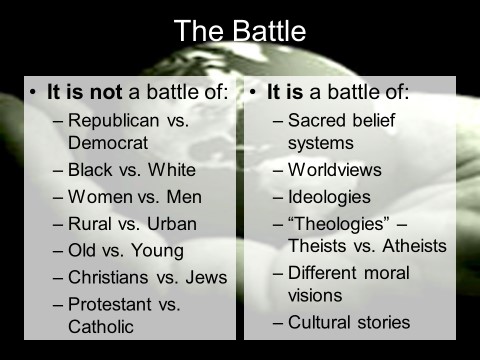 Everyone holds a worldview, consciously or subconsciously, in faith. Judeo-Christian theism, atheism, and animism (ancient paganism as well as Neo-paganism) all answer these basic questions, but very differently. Different worldviews create very different cultures leading to very different political, economic and social institutions and programs.
Everyone holds a worldview, consciously or subconsciously, in faith. Judeo-Christian theism, atheism, and animism (ancient paganism as well as Neo-paganism) all answer these basic questions, but very differently. Different worldviews create very different cultures leading to very different political, economic and social institutions and programs.
Our worldview shapes nations, cultures, and individual lives.
In the first three centuries after Christ, His followers challenged paganism and laid the groundwork for Western Civilization. The influence of the Renaissance (14th-17th centuries) on Europe was a mixed bag, especially the movement away from seeing the Bible as authoritative for life. But the Protestant Reformation (16th century) launched a return to a Judeo-Christian worldview and the reforming of Europe.
In the 17th century, because the church had lost her vigor, she turned to pietism and a dualistic worldview. Instead of emphasizing Christ’s lordship over all things, human experience was divided into the sacred and the secular, and God was restricted to the latter.
The 18th and 19th centuries saw revival and reformation once again, this time via the First Great Awakening. In the 20th century, as society faced a choice between ancient paganism and Judeo-Christian theism, the church neglected its Judeo-Christian theistic roots. The Darwinian/modern worldview prevailed, and we saw the rise of materialism both in the communist world and in the narcissistic consumer society of the West. One shameful outcome: an abortion culture that celebrates the termination of human life.
A Nation Divided
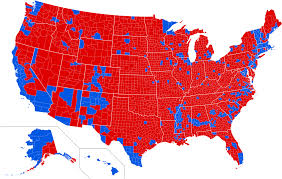 Of the 3,000+ counties in the US, 146 (mostly on the coasts or in university towns) have largely embraced modern or postmodern ideologies. The vast majority of people in rural America, on the other hand, operate on the conviction, or the memory, of Judeo-Christian theism. As Rabbi Daniel Lapin has so powerfully articulated, “We are no longer one nation under God. We are two separate nations with two distinct and incompatible moral visions.”
Of the 3,000+ counties in the US, 146 (mostly on the coasts or in university towns) have largely embraced modern or postmodern ideologies. The vast majority of people in rural America, on the other hand, operate on the conviction, or the memory, of Judeo-Christian theism. As Rabbi Daniel Lapin has so powerfully articulated, “We are no longer one nation under God. We are two separate nations with two distinct and incompatible moral visions.”
The map shows the results of the 2016 presidential election by county. It clearly illustrates these two Americas. The red is characterized by honor for the American flag, the blue by those who dishonor it. While the Red geography is far larger than the Blue, the two populations are about the same. The coasts are dominated by an atheistic framework, inland by the Judeo-Christian worldview, either consciously or in memory.
A fight not unlike the Civil War is on for the soul of the nation. That war was between North and South; today’s is between the coasts and the heartland.
Here’s another way to see this: the blue represents the media centers and universities. Drivers of the media, academics, and other governing elites typically function as atheist, either in a naturalist or a postmodern framework. These individuals dominate the messaging we see daily on TV, in movies and the mainstream media. They also largely dominate the universities.
What happens to a divided nation?
- Darrow Miller
… to be continued




